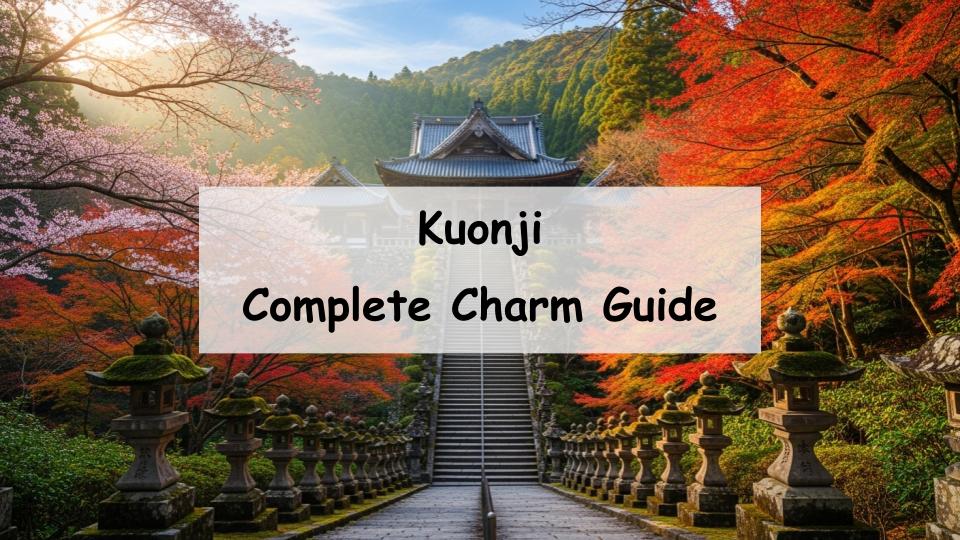Are you planning to visit Kuon-ji Temple and wondering, “What kind of place is it?” or “How do I get there, and what should I see?” If so, you’re not alone. The short answer: Kuon-ji is a spiritually rich and historically significant temple well worth a visit. In this article, we’ll introduce the unique features of Kuon-ji, must-see highlights, and how to access the temple—especially helpful if it’s your first time. By the end, you’ll be fully prepared to enjoy everything Kuon-ji has to offer.
What is Kuon-ji Temple? History and Basic Information
Origins and Historical Background
Kuon-ji Temple, located in Minobu Town, Yamanashi Prefecture, is the head temple of the Nichiren sect of Buddhism. It was founded in the late Kamakura period by Nichiren Shonin, who spent the final years of his life here. In 1281, he established a retreat in this area, and the temple later became a major center of Nichiren Buddhist practice, drawing followers from across Japan for centuries.
Sect and Spiritual Teachings
As the head temple of the Nichiren sect, Kuon-ji is rooted in the teachings of the Lotus Sutra, which emphasizes the inherent potential for enlightenment in all beings. Chanting “Nam-myoho-renge-kyo” is a central practice. Visitors can witness and even take part in daily ceremonies, offering a firsthand experience of the temple’s living spiritual tradition.
Location and Basic Facts
Kuon-ji is nestled in the mountains at an elevation of around 400 meters. Surrounded by pristine nature, the temple offers a quiet, serene atmosphere. Despite its popularity as a tourist destination, it retains the solemn aura of a sacred place for Buddhist practice.
Highlights of Kuon-ji Temple: 5 Must-See Attractions
The Majestic Architecture of the Main Hall (Soshi-do)
The Soshi-do, or Founder’s Hall, is the central structure of Kuon-ji and a prime example of traditional Japanese temple architecture. Dedicated to Nichiren Shonin, the hall features elaborate wooden carvings and a stately presence. Especially in the morning light, the structure radiates spiritual dignity.
Stone Steps and Scenic Views
One of the most iconic features of Kuon-ji is the 287 stone steps leading to the temple. Climbing them is considered a spiritual journey in itself, symbolizing dedication and inner reflection. Once at the top, visitors are rewarded with sweeping views of the surrounding landscape.
Seasonal Beauty: Cherry Blossoms and Autumn Leaves
Each season brings unique charm to Kuon-ji. In spring, the grounds are adorned with cherry blossoms, including famous weeping cherry trees. In autumn, vibrant red and yellow leaves transform the temple into a stunning natural canvas. These seasonal changes make each visit a new experience.
Cultural Rituals and Annual Ceremonies
Kuon-ji hosts many important religious events throughout the year. The Oeshiki ceremony in October, commemorating Nichiren Shonin’s passing, is especially notable. New Year’s celebrations and other temple events provide opportunities to observe or participate in traditional Buddhist rituals.
Spiritual Energy Spots Around the Temple
The area around Kuon-ji is dotted with places known for their spiritual energy. Trails leading to the Oku-no-in (inner temple), small waterfalls, and quiet corners of the mountain paths are considered power spots. These locations offer tranquility and an opportunity to connect with nature and yourself.
How to Get to Kuon-ji Temple: Access and Transportation Guide
By Public Transportation: Train and Bus
To reach Kuon-ji using public transportation, take the JR Chuo Line to Kofu Station, then transfer to the Minobu Line and get off at Minobu Station. From there, a local bus or taxi will take you to the temple. During peak seasons, extra services may be available, so checking the schedule in advance is recommended.
By Car: Directions and Parking Information
Kuon-ji is about an hour’s drive from the Kofu Minami Interchange on the Chuo Expressway. Several parking lots—both free and paid—are located near the temple. If you’re visiting during holidays or events, it’s wise to arrive early, as the roads can get congested and parking may fill up quickly.
On Foot: The Traditional Approach Route
For those who enjoy walking, the traditional pilgrimage route includes the long stone stairway mentioned earlier. It takes about 20–30 minutes to climb, and rest stops and small tea shops along the way make the journey enjoyable. It’s a rewarding walk for body and spirit alike.
What You Should Know Before Visiting Kuon-ji Temple
Visiting Hours and Etiquette
Kuon-ji is typically open from 6:00 AM to 5:00 PM, though hours may vary slightly by season. When visiting, it’s important to maintain quiet behavior, respect signs and barriers, and avoid photographing areas where it’s not permitted. During chanting or ceremonies, silence is especially appreciated.
Local Attractions and Nearby Spots
The surrounding area offers more than just the temple. Local shops, restaurants, and traditional buildings add charm to the visit. Try specialties like Minobu manju (sweet buns) or take the Minobu Ropeway for a higher perspective—on clear days, even Mt. Fuji may come into view.
Lodging: Temple Stays and Hotels
Kuon-ji offers shukubo, or temple lodging, allowing guests to experience morning prayers and a peaceful night in a sacred setting. For those preferring more conventional accommodations, nearby hotels and inns are available, providing a variety of options for different travel styles.
Conclusion: Experience the Deep Allure of Kuon-ji Temple
Recap: Key Attractions and How to Get There
Kuon-ji Temple offers a powerful mix of history, natural beauty, and spiritual culture. From its grand main hall and stone stairway to seasonal landscapes and vibrant ceremonies, it has something for every visitor. With clear access routes and lodging options, it’s an ideal destination for a meaningful trip.
How First-Time Visitors Can Enjoy the Temple
Even if it’s your first visit, you’ll feel at ease exploring Kuon-ji with a little preparation. By learning about the temple’s customs and highlights in advance, you’ll be ready to fully enjoy your experience. Take your time, breathe deeply, and let the tranquil energy of Kuon-ji nourish your spirit.






Comment